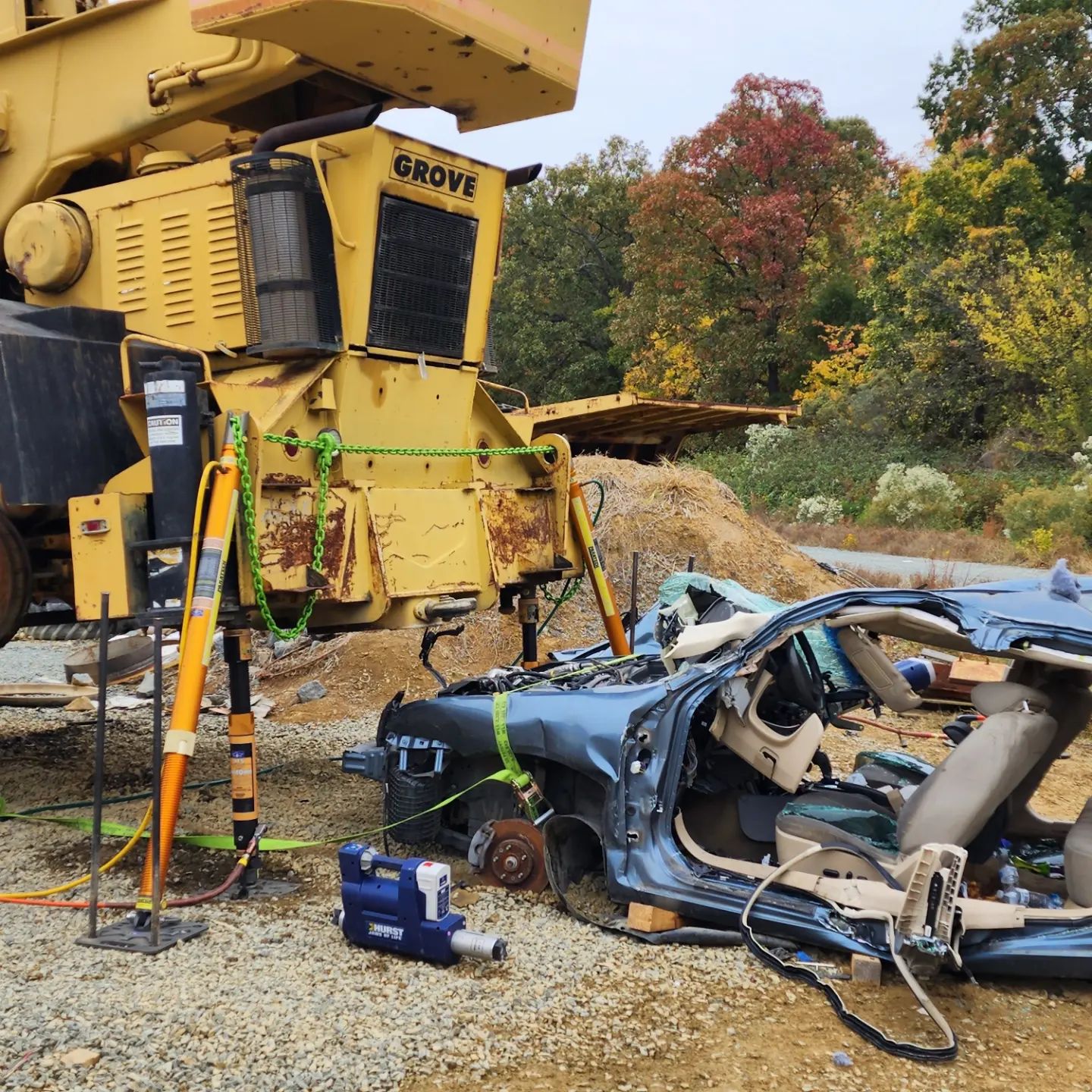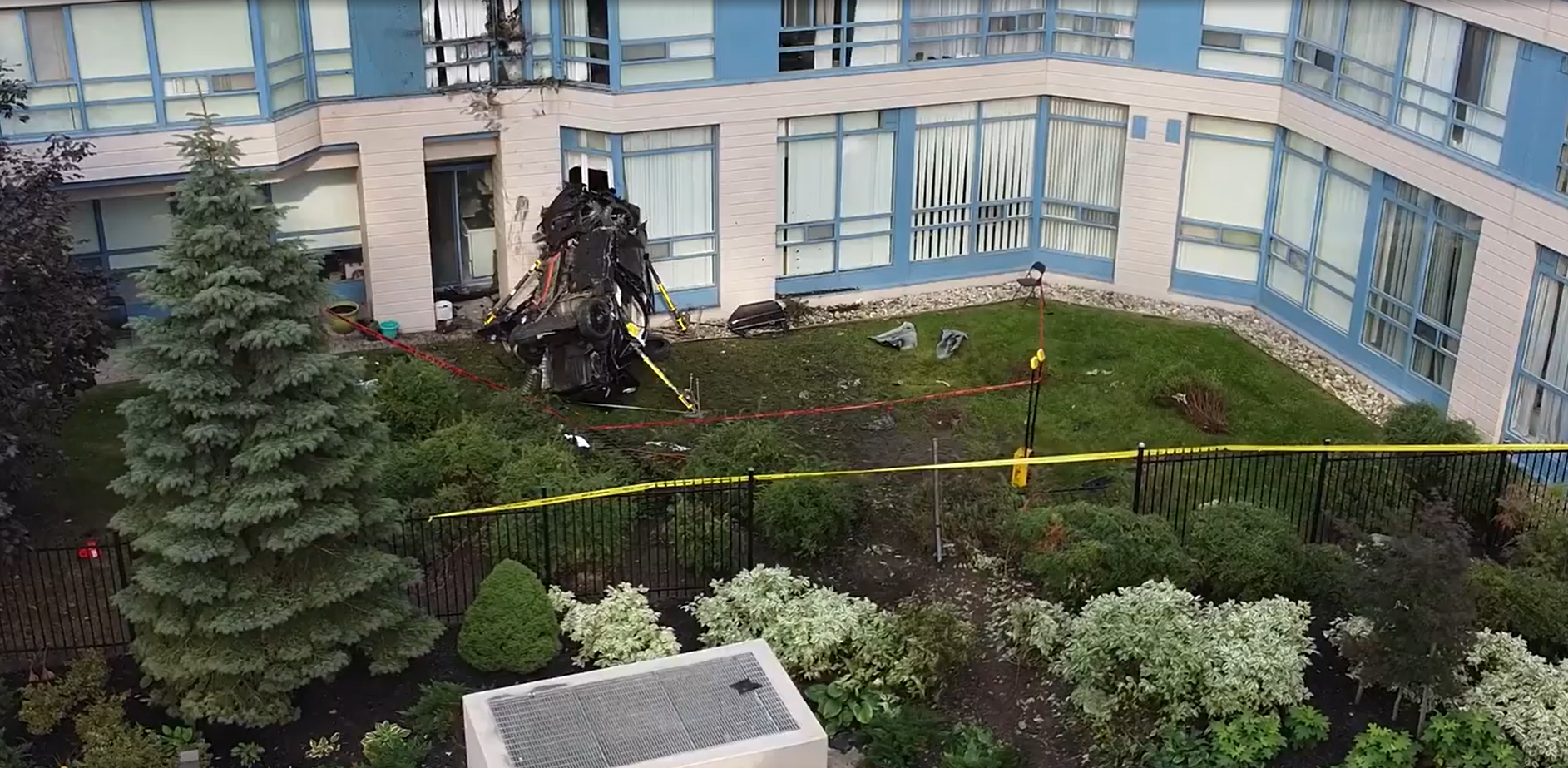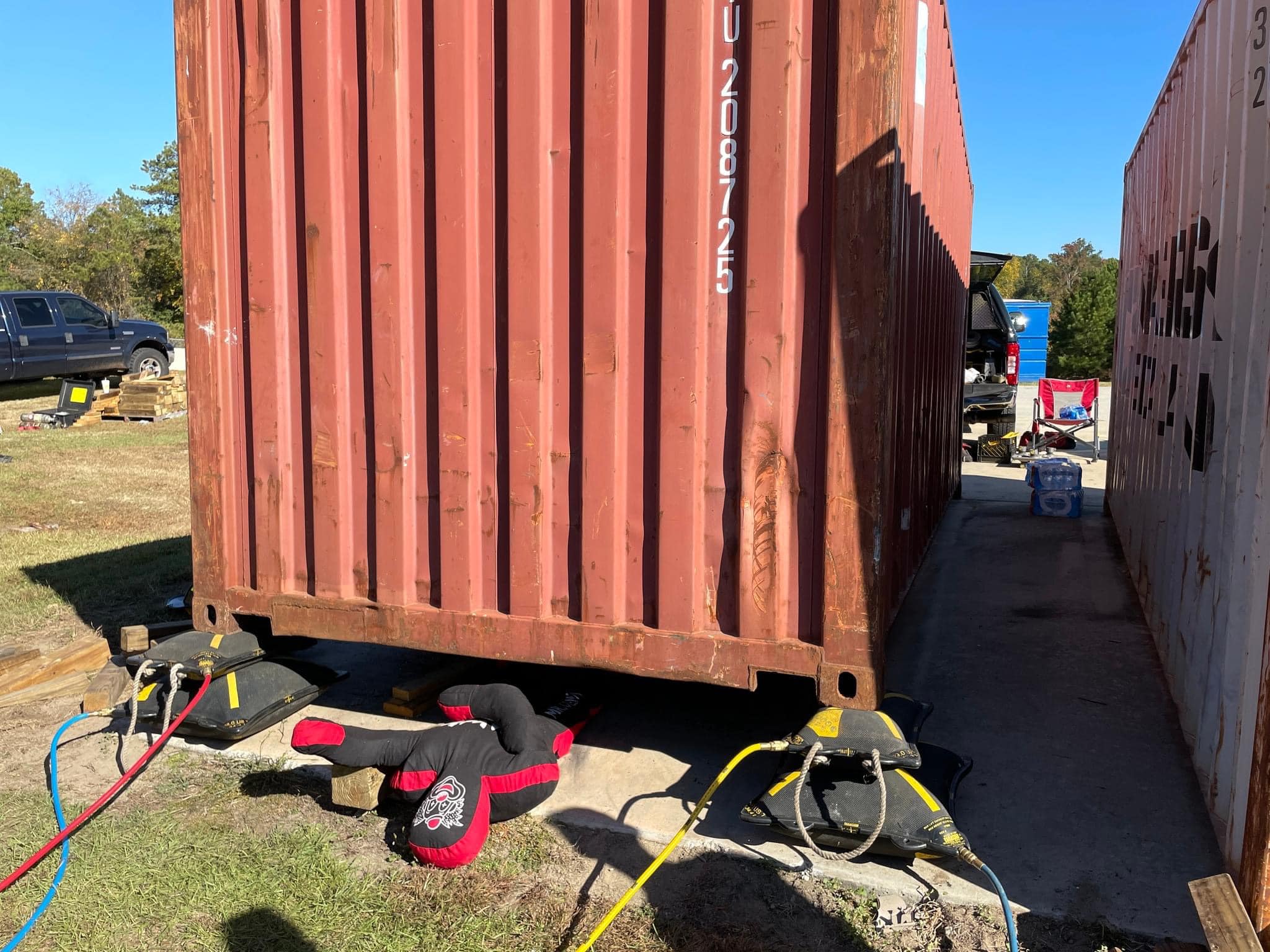Vehicle rescue instructors should remind participants in your training classes, especially if they are EMS-oriented responders, about how they can ‘read’ a seatbelt pretensioner system and may be able to get a sort of second opinion about whether their patient was or was not wearing their seatbelt.
Our scenario is that the frontal airbags have deployed. An airbag spiderweb is evident on the passenger’s side of the windshield. As you get closer, we see no spider web on the windshield on the driver’s side; this is a good thing.
Now how can we ‘read’ the seatbelt pretensioner system to see who was or was not wearing their seatbelt? There is some evidence the pretensioner system may reveal that can help us verify what we find when we make patient contact.

A common design of seatbelt pretensioner is integrated into the take-up spool of the seatbelt recoiler. With the trim removed, we can clearly see the actual pretensioner unit of this specific vehicle at the recoiler mounted to the base of this B-pillar. Also note the familiar yellow color wiring sheath that is the most common color used by automakers to identify airbag and pretensioner wiring circuits.
As we look at the empty driver’s seat in our scenario, we can confirm that the driver occupant of this vehicle was wearing their seatbelt when the crash occurred. Why do we know this and how can the pretensioner system tell us?
Pretensioners mounted to the recoiler unit typically lock the recoiler so it will not retract after the pretensioner deploys. The slack in the belt as shown here, once it is unbuckled, is your clue that it deployed while being worn by the occupant. It will not retract due to the take-up recoiler locking so it had all kinds of slack in it when the driver took it off.
On the passenger side however, since this seatbelt was not bucked at the moment of the crash, you would see that it is now drawn tight along the inside of the B-pillar. Either no occupant was here or if there was a passenger, this occupant was unbelted at the time of the collision.

‘Reading’ a seatbelt pretensioner system might just be a good “second opinion” for you to note when you are assessing mechanism of injury for your patients. My experience has been that the intoxicated patients tell you they were always wearing their seatbelt. With pretensioners, you’ve got something else to help you assess if they are telling you the truth or stretching their law-abiding status a bit.
Courtesy of Rob Moore from University of Extrication
Techniques
Heavy Stabilization & Lift Class

Heavy Stabilization & Lift Class
This weekend, Toranze Lee and Premier Extrication held their Heavy Stabilization and Lifting class taught. The class focused on advanced techniques using the Paratech equipment, eDraulic tools, grip hoists, vehicle stabilization methods, airbags for lifting, power tools, and the use of heavy wreckers for extrication.
Some of the departments that attended:
Techniques
North Carolina Extrication School
Training
Car into an apartment building
In Mississauga, Canada, a vehicle crashed into a large residential building and the damage could have impacted up to 4 stories. Mississauga Fire and Emergency Services stated the vehicle hit the window on the building’s second floor. The driver was extricated and transported to the hospital.

Car into an apartment building
In Mississauga, Canada, a vehicle crashed into a large residential building and the damage could have impacted up to 4 stories. Mississauga Fire and Emergency Services stated the vehicle hit the window on the building’s second floor. The driver was extricated and transported to the hospital.














































